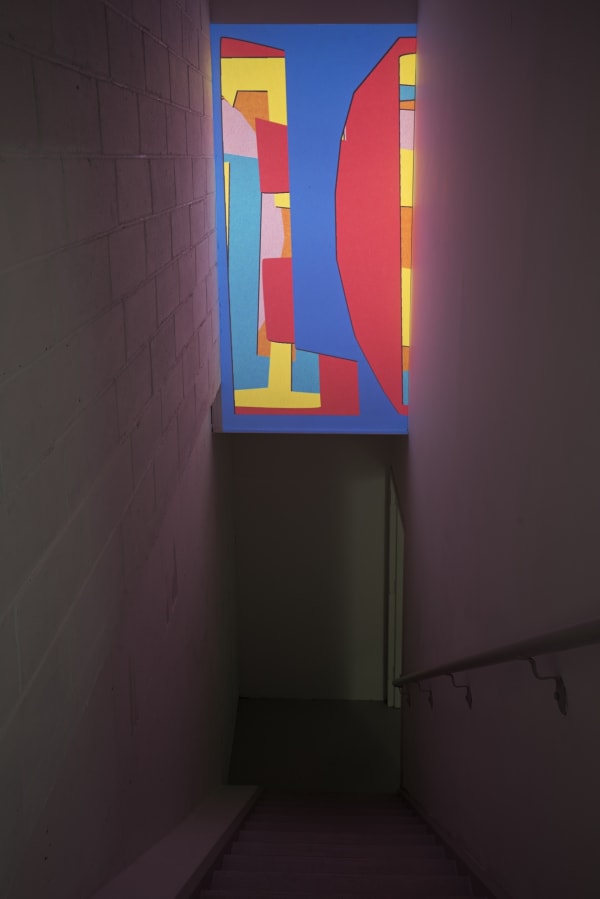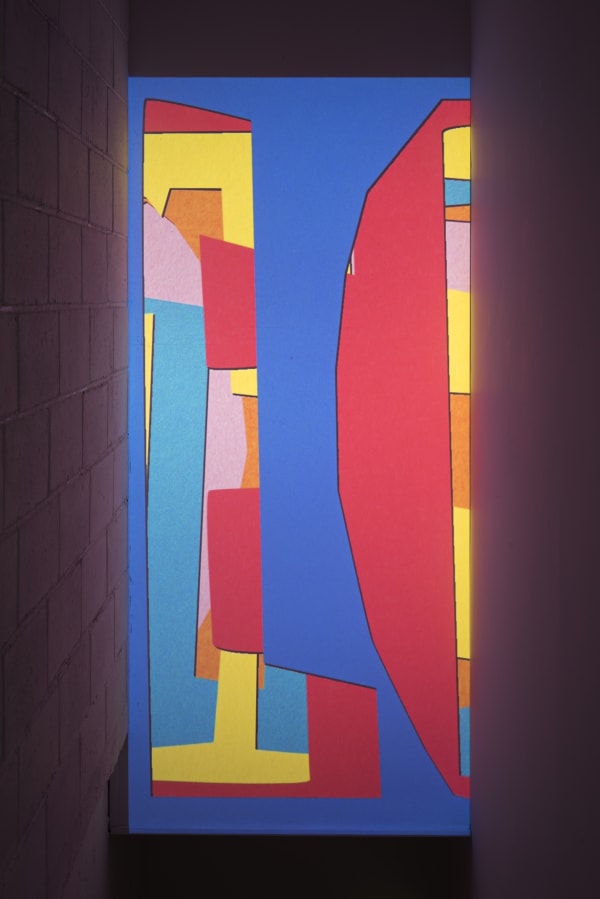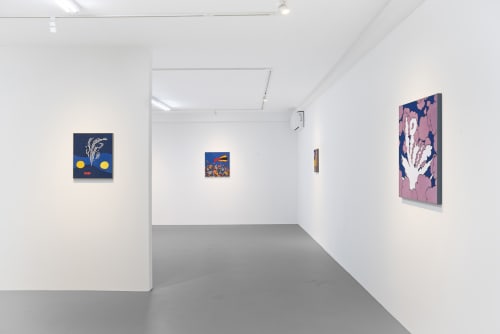Rhys Coren: Rock-hard Aura and the Lost Explorer
GRIMM is pleased to announce Rhys Coren’s solo exhibition Rock-hard Aura and the Lost Explorer at our New York gallery space. This marks this British artist’s first solo exhibition with the gallery, and Coren’s first solo exhibition in the United States. Presented is a single-channel animation and a group of paintings.
Rhys Coren’s pulsating visual language spans across a variety of different media. Over the last few years, his multidisciplinary practice has abstracted mathematical structure, blending and fusing television, cartoons, football kits, poetry, fashion, furniture design and records sleeves; re-presenting them as painted marquetry, animated works, performance and installation. Coren edits imagery, simplifying some parts and embellishing others, to cross-contaminate disparate source material into pleasure-filled works. This new body of work rewinds on this abstract visual language, returning to a particular crossroads in his practice at which certain information (like the drawn line) was removed –kick-starting a new journey, at a slight tangent. Authored by hand by means of color and texture, sources are blended and married to evoke a musical feeling of existing elsewhere, while rooted in the real.
Coren’s boundless paintings are attributed to animation, capturing rhythm and attitude through buoyant composition and texture. Combining and collaging animation or cartoon stills —frozen moments that would otherwise fly by in a twelfth of a second, Coren’s own drawings evolve into enigmatic compositions. With only a few colors in most works, time is spent fetishizing over the choices and subsequent combinations of these colors, as well as the various subtle differences in texture. Emulating attitude from 1960s, ’70s, and ‘80s records and animation, these influences are visualized in relationship to Josef Albers’ illuminating color theory.
Coren’s vibrantly witted works are focused on the boundaries of representational imagery dictated by line. In this body of work, Coren is taking a more direct, pictorial approach. The idea of the black or white, hand-drawn cartoon line is a way of creating a representational image that also conveys rhythm. The line is ‘literal’ as in undeniably cartoonish, and ‘literal’ as in representational. The cartoon line, with all its loops and wobbles, borrows the language of movement —splashes, explosions, puffs of smoke, noise, speed. It somehow creates space, and the idea that a moment has been trapped opens up more of a psychological, or imaginary space. What was the frame before? What is the frame after?










